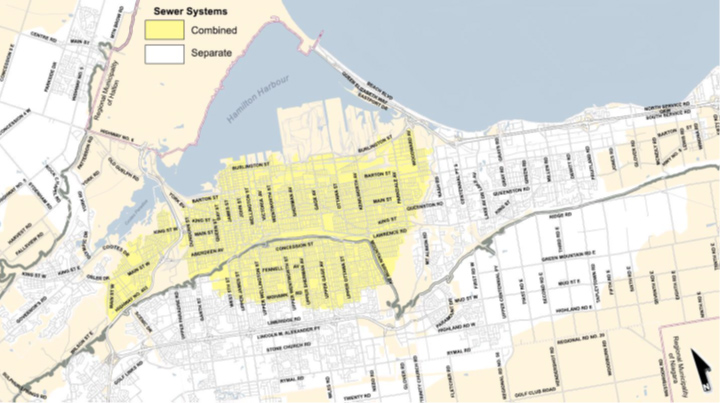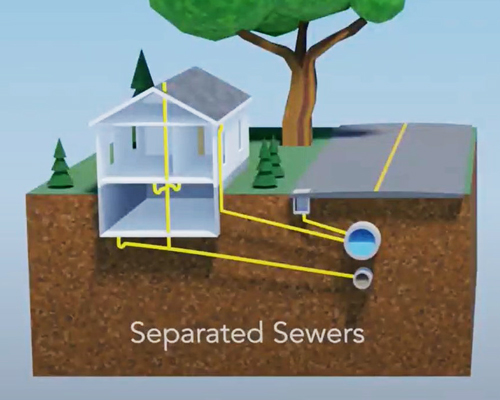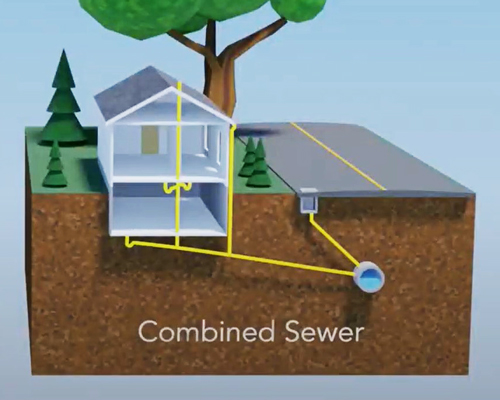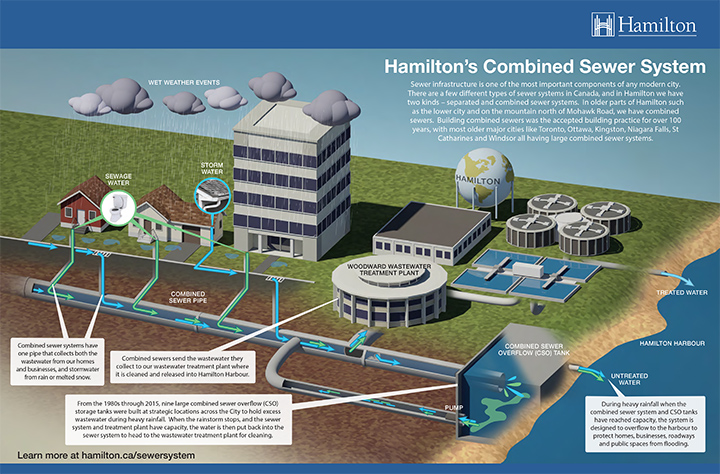Sewer Systems

For more information
Call 905-546-2489 or
Email [email protected]
For a water or wastewater emergency
Call 905-546-2489
The City of Hamilton has both combined and separated sewer systems, this map shows the general locations of combined and separated sewers across the City.

Separated sewer system
Like the name suggests – have two separate sewer pipes, one for sewage, and one for storm water. The pipe that carries sewage or wastewater is called a sanitary sewer. The sanitary sewer collects wastewater from homes and businesses and takes it to our wastewater treatment plant. The wastewater collected in the sanitary sewer is cleaned at the wastewater treatment plant and then released into Hamilton Harbour.
In a separated sewer system – a second pipe collects and carries storm water. It’s called the storm sewer. Rain water and melted snow enter outdoor drains such as downspouts and catch basins, which are connected to the storm sewer. Storm sewers release the water they collect directly to the environment.
Separated sewers are found in the newer parts of Hamilton – such as areas on the mountain south of Mohawk Rd and newer areas like Binbrook and Waterdown.

Combined sewer system
In older parts of Hamilton such as the lower city and on the mountain north of Mohawk Road – just like in many older cities across Canada – we have combined sewers. Building combined sewers was the accepted building practice for over 100 years, with most older major cities like Toronto, Ottawa, Kingston, Niagara Falls, St Catharines and Windsor all having large combined sewer systems.
These sewer systems have one pipe that collects both the wastewater from our homes and businesses, and stormwater from rain or melted snow. Combined sewers send the wastewater they collect to our wastewater treatment plant where it is cleaned and released into Hamilton Harbour. One of the main differences between separated sewers and combined sewers is most visible during heavy rainfall.
In cases with a lot of rain or melting snow, the additional volume of water in the combined sewers can exceed the capacity of the system.

Combined Sewer Overflow Tanks
The nine large storage tanks called combined sewer overflow tanks hold more than 314,000 cubic metres of diluted wastewater. During rain events the combined sewer overflow tanks will fill and store the excess water. If the storm continues the sewer system - now being full and at capacity, will then overflow into the harbour. When the storm stops, and the sewer system and treatment plant have capacity for the volume of wastewater inside the combined sewer overflow tanks, the water is then put back into the sewer system to head to the treatment plant for cleaning.
If the combined sewer system didn’t have the designed overflow option to release wastewater to the harbour, large areas of Hamilton would experience flooding - which would impact homes, business, roadways, public spaces and public health.
Overflow & Bypass Public Notifications
The City currently shares information about wastewater treatment plant bypass events visit www.hamilton.ca/wastewaterbypass
In Spring 2020, the City began sharing information about overflow events at combined sewer overflow outfall locations.

